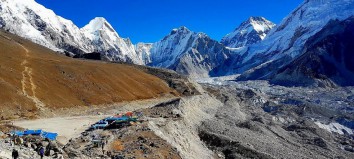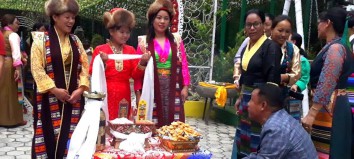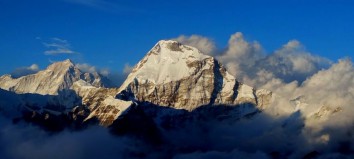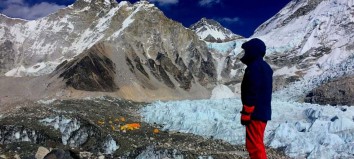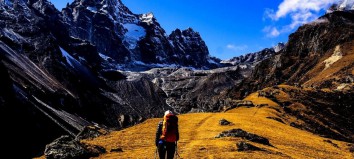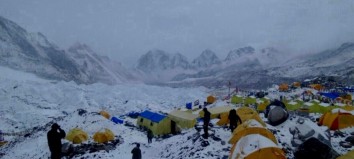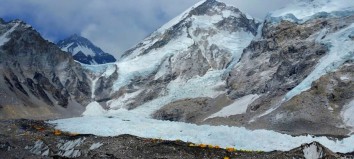Brief description about Sherpa culture in Nepal
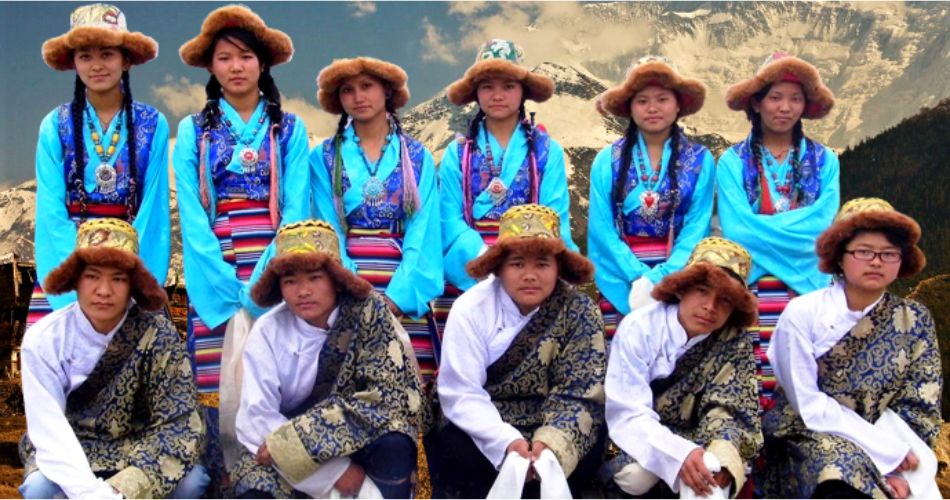
The Sherpa culture is a rich and complex cultural heritage that has evolved over many centuries in the harsh mountain environment of the Solu-Khumbu region of Nepal. It is a unique blend of Tibetan, Himalayan, and Nepalese influences, and it is deeply rooted in the Sherpa people's close relationship with the land and their spiritual beliefs.
The Sherpa culture is centered around the family, the community, and the natural world, and it is characterized by strong social bonds, a deep respect for tradition and elders, and a close relationship with the environment. Sherpas have a rich spiritual tradition, and they believe that their well-being is closely tied to the health of the natural world. They perform various rituals and ceremonies to appease the mountain gods and maintain the balance of the environment.
The Sherpa culture is also known for its hospitality and generosity, and visitors to the Solu-Khumbu region are often struck by the warmth and kindness of the Sherpa people. Sherpas have a long history of welcoming outsiders into their homes and communities, and they are known for their willingness to help others, regardless of their background or nationality.
In recent years, the Sherpa culture has faced many challenges, including the impacts of tourism, environmental degradation, and modernization. Despite these challenges, the Sherpa people have remained resilient and have worked hard to preserve their cultural heritage and traditions. The Sherpa culture continues to play an important role in the lives of Sherpas, both in Nepal and around the world, and it is a source of pride and identity for this proud and diverse ethnic group.
Who are the sherpas?
The Sherpas are an ethnic group of people native to the Solu-Khumbu region of Nepal. They are renowned for their skills as mountaineers and have been serving as guides and support staff on expeditions to Mount Everest and other high peaks in the Himalayas for many years. They are valued for their knowledge of the mountains, their ability to acclimate to high altitudes, and their strong cultural and spiritual connection to the mountain landscapes. The term "Sherpa" has also come to be used more broadly to refer to any professional mountain guide or support staff, regardless of their ethnicity or national origin.
What is the origin of sherpa people in nepal?
The origin of the Sherpa people in Nepal is not definitively known, but there are several theories about their ancestry. Some scholars believe that the Sherpas are descendants of Tibetan migrants who settled in the Solu-Khumbu region of Nepal many centuries ago. Others think that they are indigenous to the region and that their ancestors have lived in the area for thousands of years.
According to Sherpa oral tradition, their ancestors were herders and farmers who lived in the high valleys and plateaus of Tibet. Over time, they gradually migrated to the lower elevations of the Solu-Khumbu region, where they adopted a way of life that was better suited to the challenging mountain environment. Over the centuries, the Sherpas have developed a rich cultural heritage, including a complex religious tradition and a strong sense of community, that has helped them to survive.
Is sherpa only mountain climbers?
No, not all Sherpas are mountain climbers. While Sherpas are well-known for their skills as mountaineers and their contributions to the mountaineering industry in Nepal, the majority of Sherpas lead traditional lives as farmers, herders, or traders. Some Sherpas are involved in tourism, serving as guides, porters, or cooks for trekking and climbing expeditions, while others work in the construction, transportation, or hospitality industries.
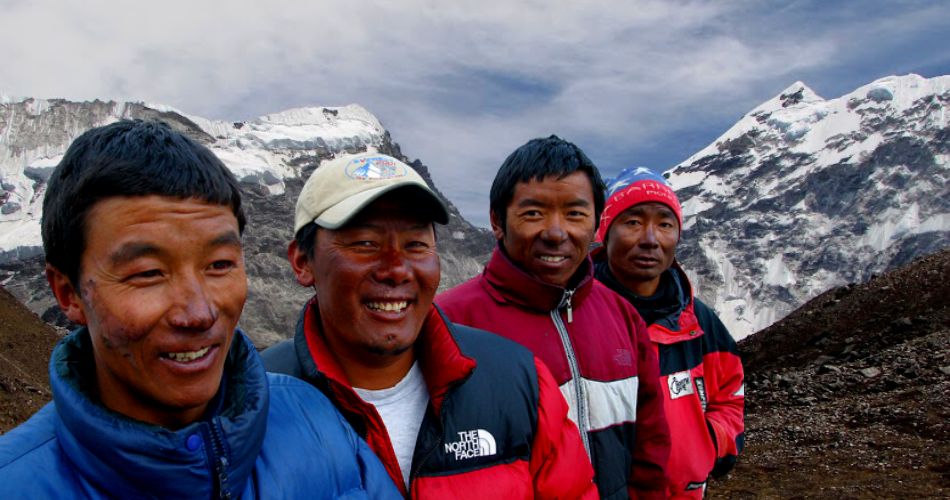
While their reputation as mountain climbers has brought them international recognition, it is important to remember that the Sherpa people are much more than just a group of elite mountain guides. They are a proud and diverse ethnic group with a rich cultural heritage, and their contributions to Nepalese society extend far beyond the mountains.
Where does mostly the sherpa people lives?
The majority of Sherpa people live in the Solu-Khumbu region of Nepal, which is located in the eastern part of the country and is home to the highest peaks in the world, including Mount Everest. The Sherpas live in small, isolated villages scattered throughout the region, where they have lived for many generations.
The Solu-Khumbu region is known for its rugged and inhospitable terrain, and the Sherpas have developed a unique way of life that is adapted to the harsh mountain environment. They are primarily subsistence farmers and herders, and their traditional lifestyle is based on their close relationship with the land and their spiritual beliefs.
In addition to the Solu-Khumbu region, there are also Sherpa communities in other parts of Nepal, as well as in Bhutan, India, and Tibet. Some Sherpas have also migrated to other countries in search of work, and there are small Sherpa communities in several cities around the world, including in the United States, the United Kingdom, and Australia.
What religion do Sherpas follow?
The Sherpa people of Nepal follow a unique form of Tibetan Buddhism, which is heavily influenced by the pre-Buddhist Bon religion of Tibet and the indigenous animistic beliefs of the Himalayas. The Sherpa religion is a syncretic blend of these various influences, and it is a central part of Sherpa cultural and social identity.
In Sherpa Buddhism, the mountains are seen as the abode of powerful spirits and gods, and they are revered as sacred places. Sherpas believe that their spiritual well-being is closely tied to the health and balance of the natural world, and they perform various rituals and ceremonies to appease the mountain gods and maintain the balance of the environment.
The Sherpa religion is also heavily focused on personal spirituality and the attainment of individual enlightenment. Sherpas believe that each person has the potential to attain spiritual awakening through meditation, religious practice, and good deeds. The lama or spiritual teacher plays a central role in the lives of many Sherpas, and they often seek guidance and instruction from their lama in matters of spirituality and daily life.
How do the sherpa people marriage?
The marriage customs of the Sherpa people in Nepal are influenced by their Tibetan Buddhist heritage and their traditional way of life in the Solu-Khumbu region.
In traditional Sherpa society, marriages are arranged by the parents and are often based on considerations such as social status, wealth, and family connections. The bride and groom are typically introduced to each other before the wedding, and they have the opportunity to get to know each other and make a decision about the marriage.
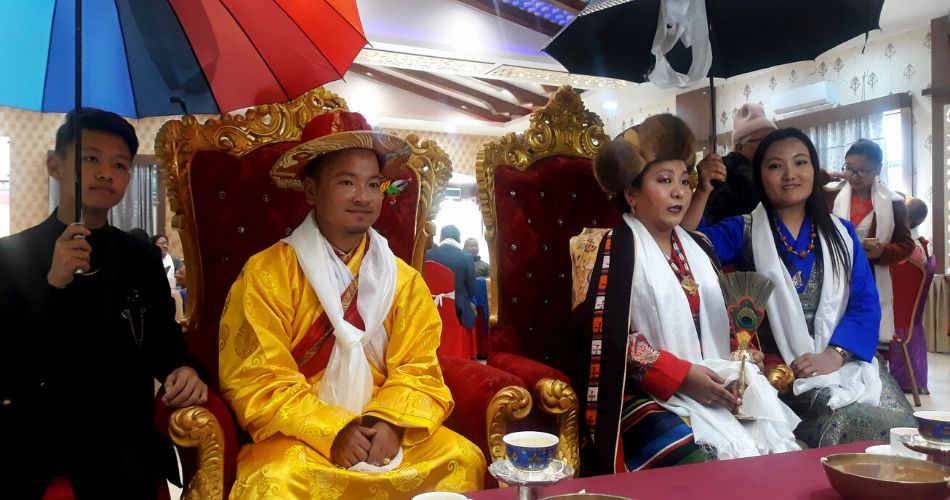
Sherpa weddings are typically elaborate and joyful events that involve the entire community. The wedding ceremony is typically performed by a lama or spiritual teacher, and it is a sacred and symbolic event that marks the union of the bride and groom. The bride and groom exchange vows, and they receive blessings from the lama and from their families and friends.
After the wedding, the bride typically moves into the groom's home and becomes part of his family. The couple is expected to start a family and to work together to support the household and the community. In traditional Sherpa society, the family is the center of social and economic life, and the couple is expected to play an active role in their community and to maintain close relationships with their families and friends.
It is important to note that like many other aspects of Sherpa society, the customs and traditions surrounding marriage are changing as the Sherpa people face the challenges of modernization and globalization. Some Sherpas are choosing to marry for love rather than through arranged marriages, and they are breaking with traditional norms in other ways as well. Despite these changes, the importance of family and community in Sherpa culture remains strong, and the bonds between Sherpas continue to be a central part of their lives.
How Sherpas are cremated
In Sherpa culture, the traditional method of disposing of the dead is through cremation. The cremation ceremony is an important ritual in Sherpa Buddhism, and it is seen as a way of purifying the soul and releasing it from the cycle of rebirth.
The body of the deceased is typically bathed and dressed in new clothes before the cremation ceremony. A lama or spiritual teacher is usually present to perform the ceremony, which typically involves reciting prayers and making offerings to the gods and ancestors. The body is then placed on a wooden pyre and burned. The ashes and remaining bones are typically collected and either scattered in a sacred place or buried.
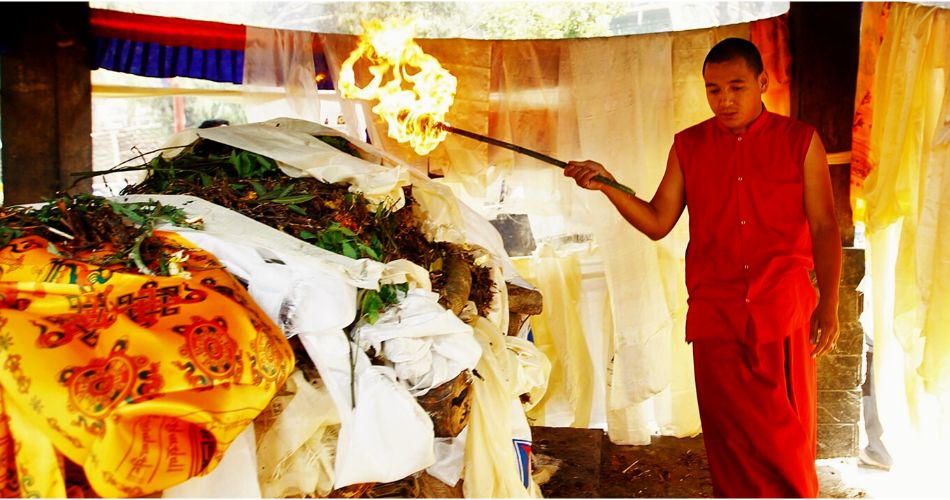
In some cases, the ashes may be placed in a memorial stupa or shrine, or they may be placed in an urn and kept in the home. The family and friends of the deceased typically perform various rituals and ceremonies over several days to honor the deceased and to ensure a safe and peaceful journey to the next life.
The cremation ceremony is an important part of Sherpa spiritual life, and it is an opportunity for the community to come together to support the family and to pay respect to the deceased. Despite the challenges posed by modernization and globalization, the importance of cremation in Sherpa culture remains strong, and it continues to play a central role in the lives of Sherpas in Nepal and around the world.
